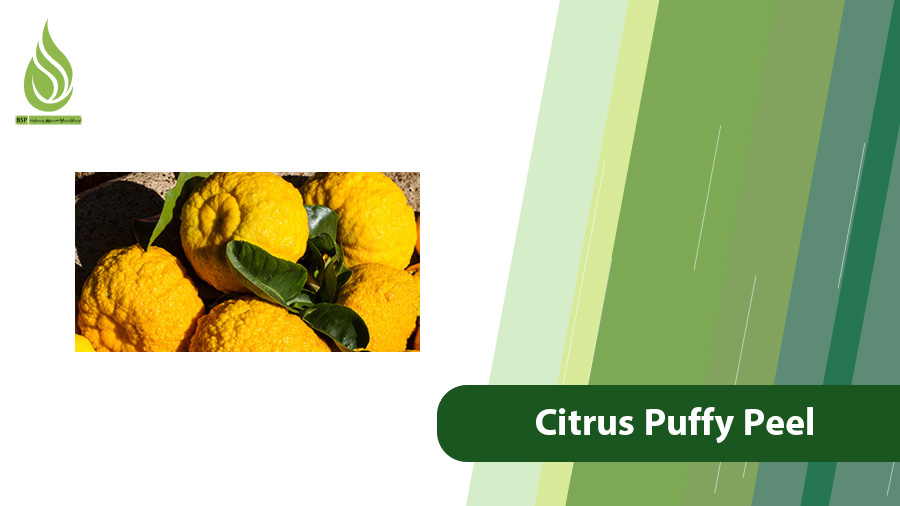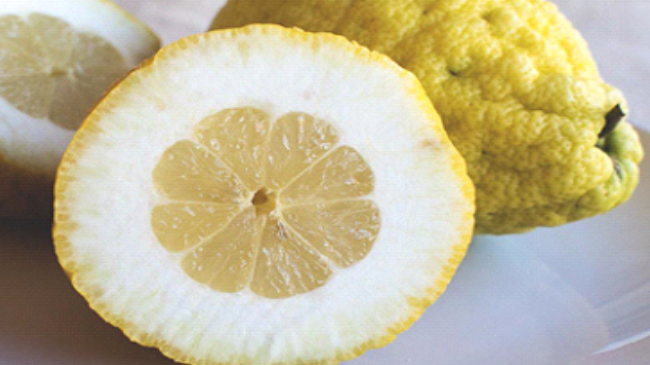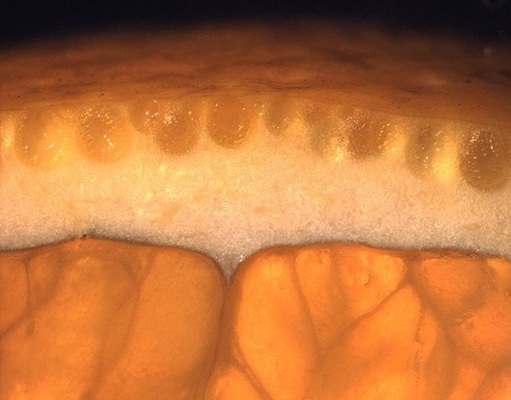
Why Does Citrus Peel Become Puffy and How to Prevent It?
Citrus puffy peel is a common yet frustrating issue for growers and gardeners alike, particularly affecting popular fruits like oranges, tangerines, and mandarins. This physiological disorder, often referred to as “citrus puffy peel” or simply “puffiness,” leads to fruits with loose, inflated skins that separate from the inner pulp, making them less appealing to consumers and reducing their market value. While it doesn’t directly alter the taste or edibility of the fruit, puffy peel can significantly impact sales and overall crop profitability. In this guide, we’ll explore the causes of citrus puffy peel, drawing from established agricultural knowledge and the latest research, and provide practical, evidence-based prevention methods.
Proper nutrition plays a pivotal role in preventing disorders like puffy peel. By integrating reliable fertilization practices with other management strategies, you can minimize the risk of puffiness and enhance fruit quality.
Understanding Citrus Puffy Peel: What It Is and Why It Matters
Citrus puffy peel describes a condition where the outer rind of fruits such as tangerines, oranges, and mandarins becomes unnaturally swollen and detached from the inner flesh, or pulp. This separation creates air pockets between the peel and the pulp, resulting in a fruit that feels light, spongy, and bloated. Visually, the affected citrus may appear misshapen, with a thicker-than-normal peel that can sometimes change color slightly, though the internal quality, such as juiciness and flavor, remains largely unaffected.
This disorder is classified as a physiological one, meaning it’s not caused by pathogens but by imbalances in the plant’s growth processes. In scientific terms, citrus puffy peel involves the breakdown or weakening of cell walls in the albedo layer, the white, spongy tissue just beneath the outer peel, leading to expansion and separation. Recent studies, including a cytological and metabolomic analysis of 12 citrus varieties, have shown that puffiness is linked to variations in the albedo layer’s structure, with higher puffing indices correlating to increased cell wall degradation and metabolic shifts. Another investigation into ‘Nanfeng’ tangerines highlighted the dynamic accumulation of abscisic acid (ABA), reactive oxygen species (ROS), and cell wall materials as key contributors to this separation process.

From an economic perspective, citrus puffy peel is a major concern because it diminishes the fruit’s aesthetic appeal. Consumers prefer firm, smooth-skinned citrus, and puffy fruits often end up downgraded or discarded, leading to financial losses for growers. In regions where citrus production is a multibillion-dollar industry, even minor incidences of puffiness can affect yields. According to the USDA, physiological disorders like this contribute to up to 20% of post-harvest losses in some citrus varieties. Moreover, in home gardens or smaller orchards, it can discourage enthusiasts from continuing to cultivate these nutritious fruits.
It’s worth noting that citrus puffy peel is more prevalent in certain varieties, such as Satsuma mandarins, due to genetic predispositions. However, environmental and management factors amplify the issue, making it preventable with the right approach. By addressing the underlying causes early, you can maintain the integrity of your citrus peels and ensure vibrant, marketable fruits.
Key Factors Contributing to Citrus Puffy Peel
Citrus puffy peel doesn’t stem from a single cause but rather a combination of nutritional, environmental, managerial, and genetic elements. Imbalances in some regions disrupt the synchronized growth between the peel and pulp. Let’s break down the primary triggers.
Irregular Watering: A Leading Culprit in Peel Separation
One of the most critical factors in citrus puffy peel is inconsistent irrigation. Both overwatering and underwatering can lead to this disorder by creating stress that affects fruit development. When trees receive excessive water, the peel expands faster than the pulp, accumulating excess moisture in the tissues and forming voids. Conversely, drought stress halts pulp growth while the peel continues to thicken, resulting in a disproportionate structure.
Extreme weather fluctuations exacerbate this. For instance, heavy rainfall following a prolonged dry period can cause rapid water uptake, leading to peel puffiness similar to fruit splitting. In arid regions, low humidity and high heat naturally promote thicker peels as a protective response, but irregular watering pushes this into pathological territory. Environmental stressors, including erratic watering, as a primary cause of puffiness.
To illustrate, consider a typical citrus orchard scenario: During summer heatwaves, if irrigation is sporadic, the tree prioritizes peel thickening for protection, but the pulp shrinks due to dehydration. This mismatch creates the characteristic air gaps. Proper moisture management is essential, as consistent soil hydration supports even growth and prevents these imbalances.
Climatic Conditions: How Weather Influences Citrus Peel Integrity
Environmental factors play a significant role in citrus puffy peel. Sudden temperature swings, high heat, low humidity, and inadequate sunlight can induce plant stress, disrupting photosynthesis and nutrient transport. Higher temperatures accelerate peel growth while slowing pulp development, increasing the likelihood of puffiness. Low light levels reduce energy production, weakening internal tissues and contributing to separation.
Recent research underscores these effects. For example, in areas prone to monsoons or variable climates, post-drought heavy rains can mimic overwatering issues, leading to peel inflation. Genetic studies also suggest that certain citrus cultivars are more susceptible under these conditions, with low fruit loads on trees further promoting puffiness by concentrating resources unevenly.
Regions like Africa and the Middle East see higher incidences due to desert-like conditions, where evaporation rates outpace water availability. Climate change models predict more erratic weather, potentially worsening citrus puffy peel, so proactive adaptation, such as shade netting or microclimate management, is increasingly vital.
Improper Fertilization: Nutrient Imbalances That Trigger Puffiness
Nutrition is at the heart of preventing citrus puffy peel, as deficiencies or excesses disrupt cellular integrity and growth harmony. Key elements include calcium, which strengthens cell walls to prevent separation; potassium, which enhances rind quality, color, and juiciness; and micronutrients like zinc, magnesium, and iron, which support sugar transport and uniform development. We suggest you take a look at our guide to citrus juiciness.
A major issue is the nitrogen-to-phosphorus ratio. Excess nitrogen promotes rapid peel expansion at the expense of pulp growth, while phosphorus deficiency weakens internal structures. Late-season nitrogen applications have been directly linked to puffiness and related disorders like crease. In contrast, balanced phosphorus thins the peel appropriately, reducing risks.
Ammonium sulfate stands out as an ideal nitrogen fertilizer for citrus, as it not only provides quick-acting nitrogen for greening and growth but also acidifies alkaline soils, improving access to other nutrients like iron and zinc. Mature citrus trees need about 1 pound of actual nitrogen annually, which can be supplied via 5 pounds of ammonium sulfate. This fertilizer’s sulfur content further aids in soil acidification, countering the calcium loss associated with other ammonium-based products. In our experience selling ammonium sulfate, customers report fewer instances of citrus puffy peel when using it in split applications, small doses multiple times a year, to avoid excesses.
Deficiencies in micronutrients can compound these problems by impairing photosynthesis and cell division, leading to uneven fruit maturation. Soil testing is crucial to identify these imbalances before they manifest as puffiness.

Pests and Diseases: Indirect Contributors to Peel Disorders
While not direct causes, pests and diseases can predispose citrus to puffy peel by damaging tissues and disrupting nutrient flow. Common culprits include scale insects, thrips, leaf miners, and mites, which weaken the peel and create entry points for infections. Fungal diseases like rind disorders or internal decays, along with viral infections, reduce pulp vitality, exacerbating separation.
Integrated pest management (IPM) is key, which is why monitoring and biological controls are used to minimize chemical use. Emerging threats like citrus greening (HLB) indirectly worsen puffiness by stressing trees overall, though new tolerant varieties show promise.
Best Fertilizers to Prevent Citrus Puffy Peel
Preventing citrus puffy peel starts with a tailored citrus fertilization program based on soil tests. Early-season phosphorus-rich fertilizers boost flowering, while potassium and calcium applications during fruit set maintain rind strength. Foliar sprays of calcium are particularly effective for direct peel fortification.
For nitrogen, ammonium sulfate is highly recommended for citrus, offering rapid uptake and soil benefits. Apply it in spring for growth, ensuring smaller, frequent doses to balance with phosphorus and potassium. Complete micronutrient blends address deficiencies, and high-potassium formulas with calcium prevent puffiness while improving water retention in fruits.
A sample schedule:
- Spring: Phosphorus-heavy for roots and blooms.
- Fruit formation: Ammonium sulfate for nitrogen.
- Mid-season: Potassium + calcium for rind quality.
- Throughout: Micronutrients as needed.
This approach optimizes vitamin C and reduces disorders.

Comprehensive Prevention Strategies for Citrus Puffy Peel
Beyond fertilization, holistic management is essential.
- Optimal Planting Conditions: Choose sunny sites with well-draining soil and suitable climates. Provide 8-12 hours of light daily.
- Pest and Disease Control: Regular scouting and IPM prevent secondary issues.
- Irrigation Best Practices: Use drip systems for consistent moisture, avoiding post-drought floods.
- Resistant Varieties: Opt for tolerant cultivars like certain Satsumas.
- Timely Harvesting: Pick at peak ripeness to avoid over-maturity, which shrinks pulp.
- Storage Techniques: Keep in cool, dry, ventilated areas to prevent humidity buildup.
Advanced methods like Citrus under Protective Screen (CUPS) offer protection from pests and weather, yielding premium fruit.
Conclusion
Tackling citrus puffy peel requires integrated efforts in watering, nutrition, and management. By prioritizing balanced fertilization, especially with ammonium sulfate, you can safeguard your citrus against this disorder. Our ammonium sulfate fertilizer is your ally in achieving firm, appealing fruits. Implement these strategies today for healthier orchards and better harvests.
